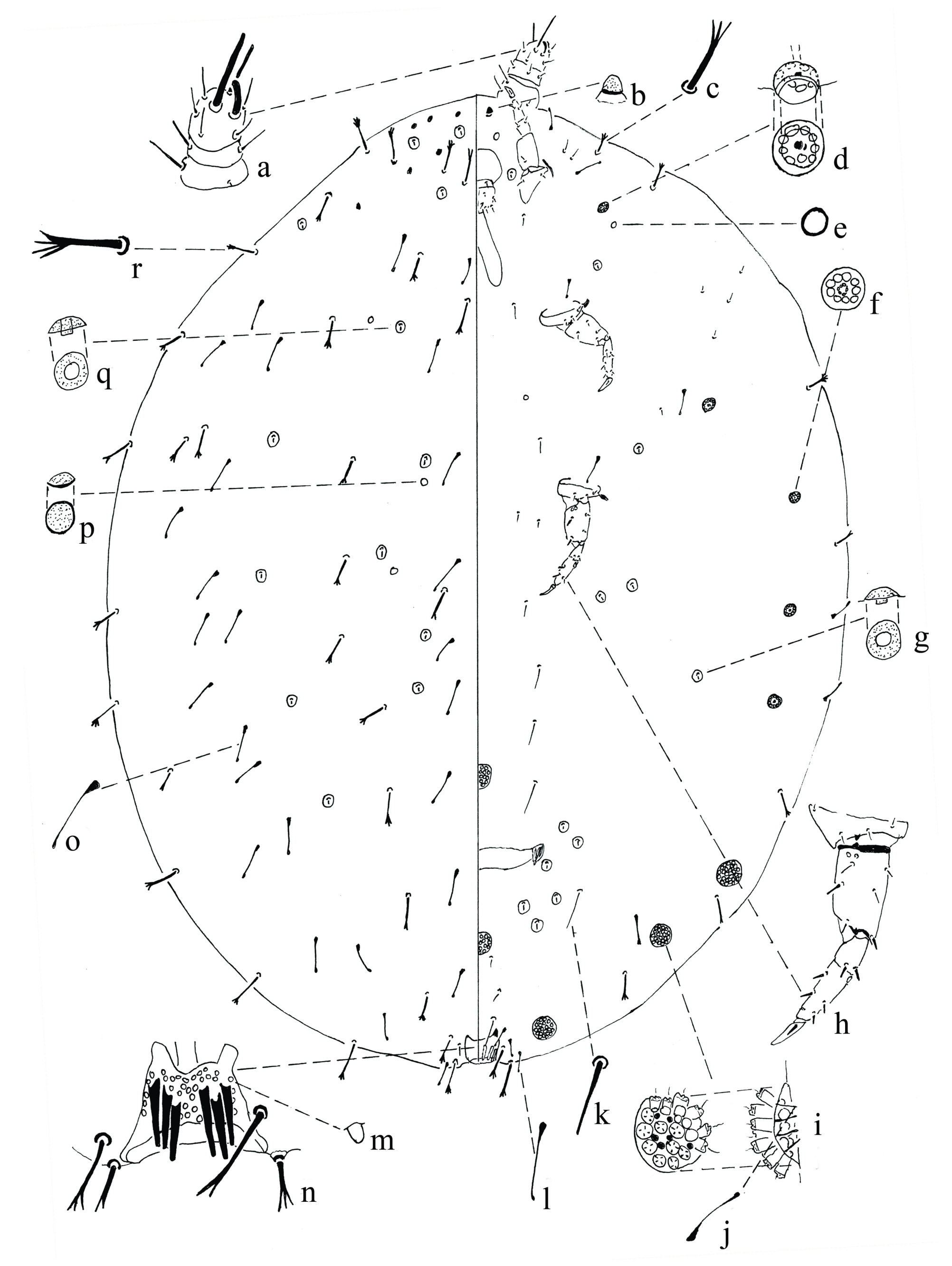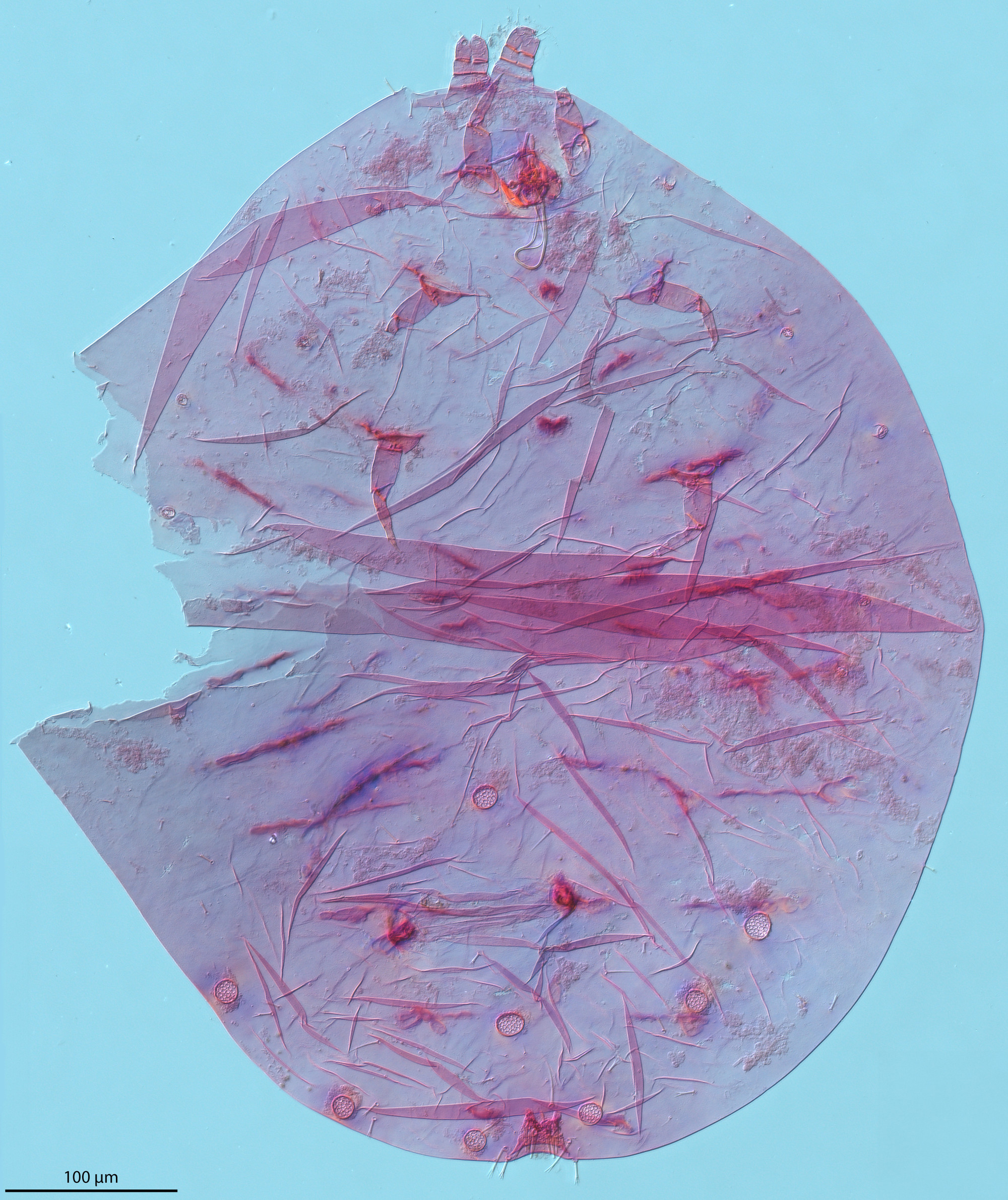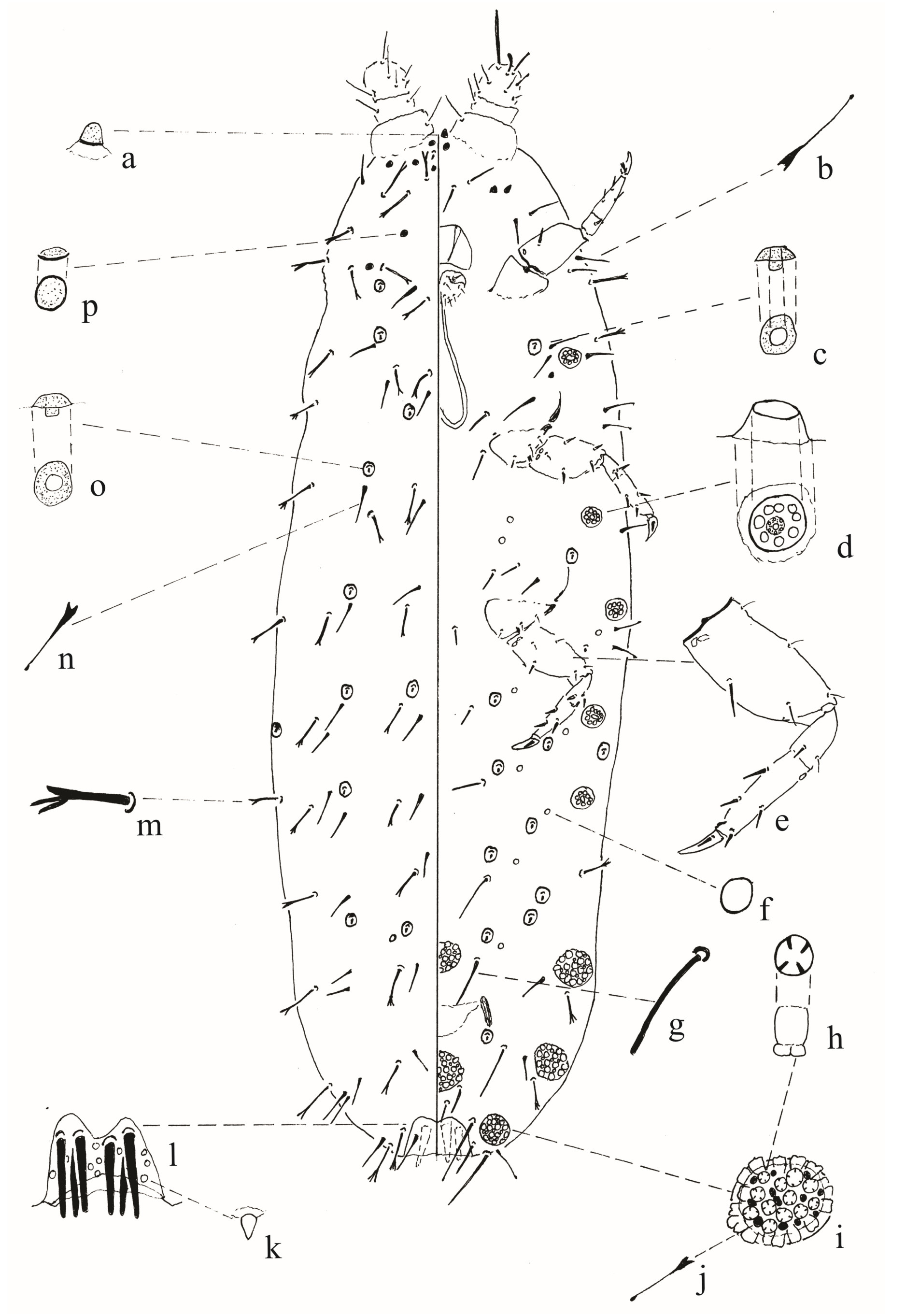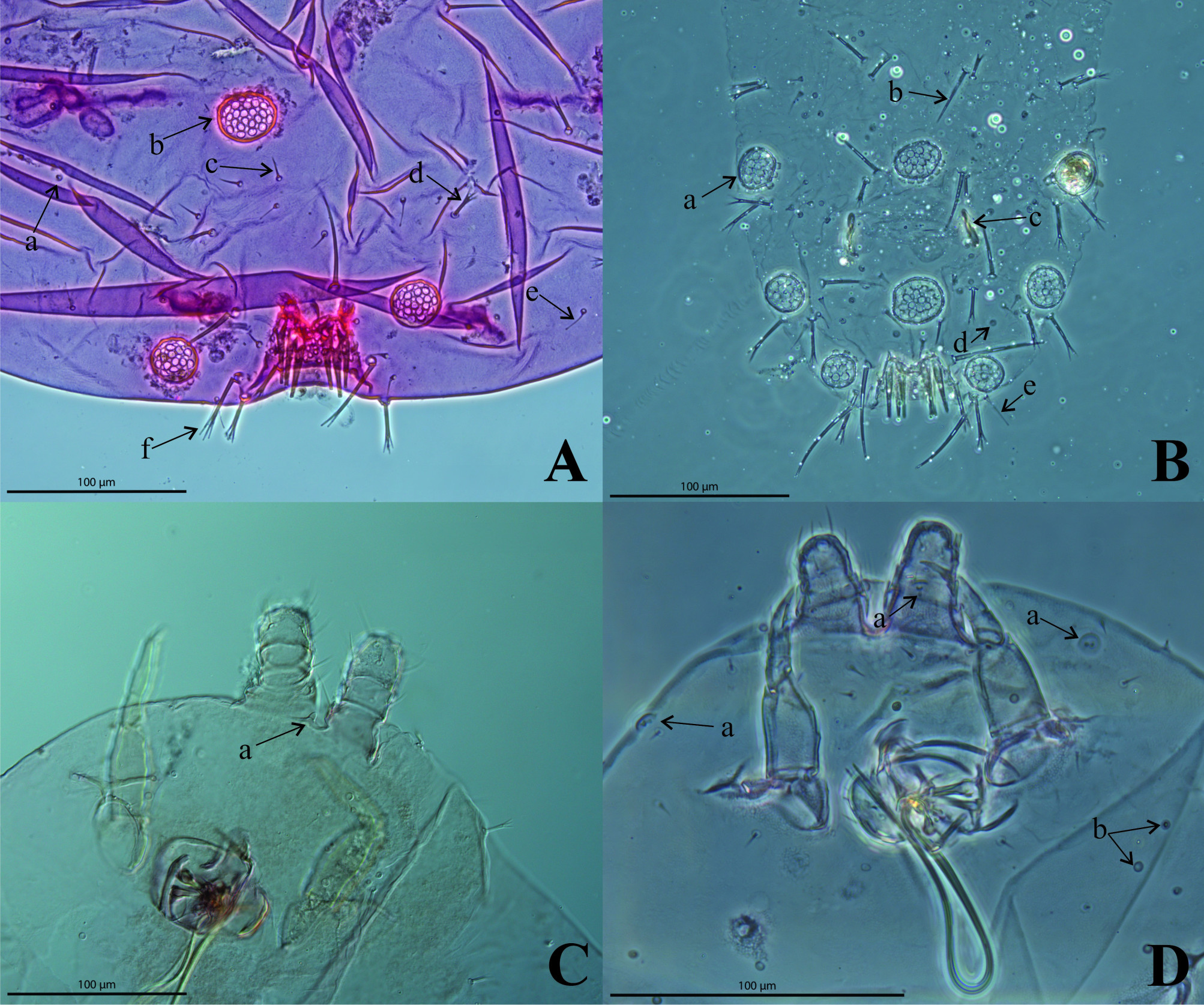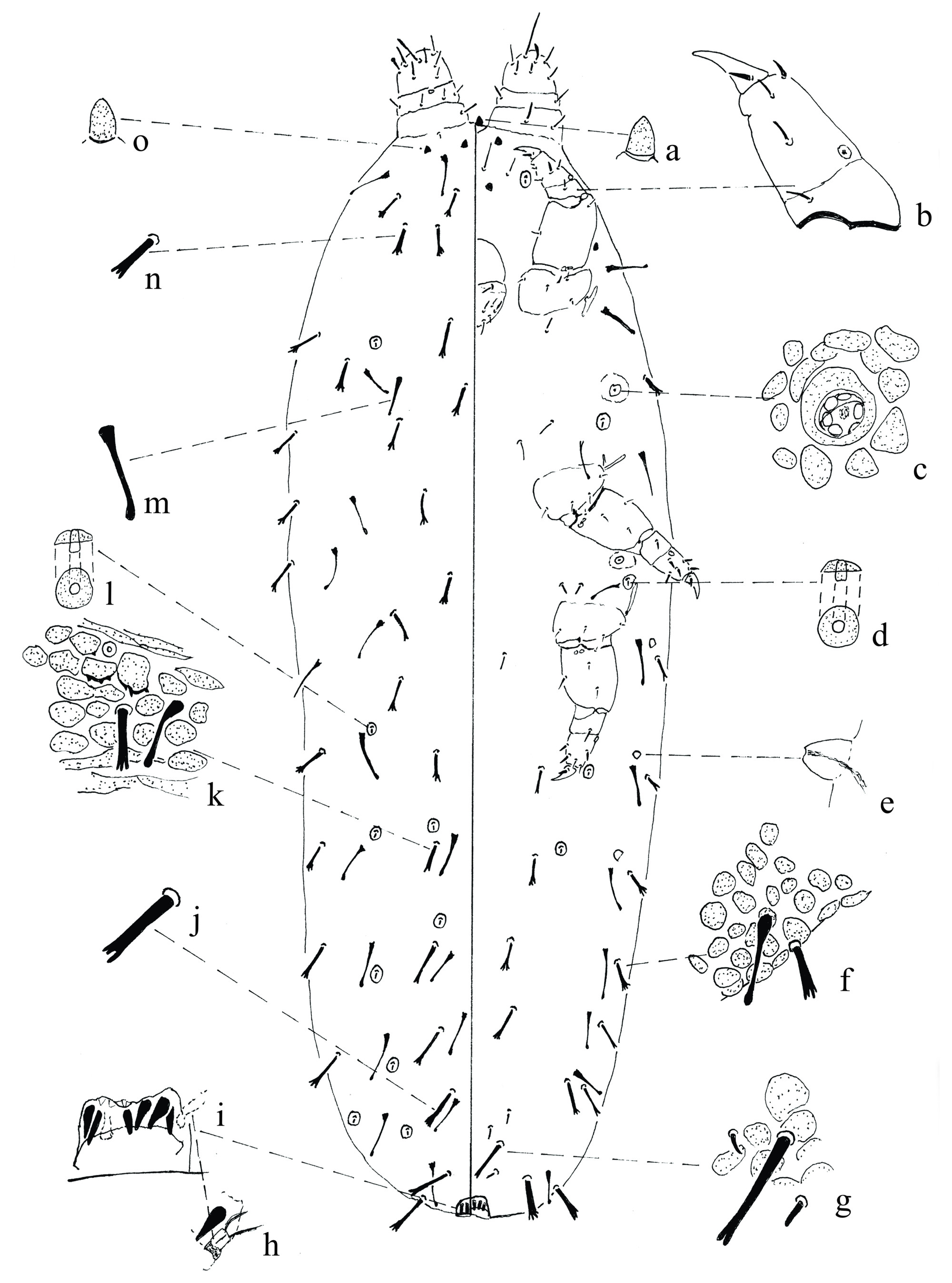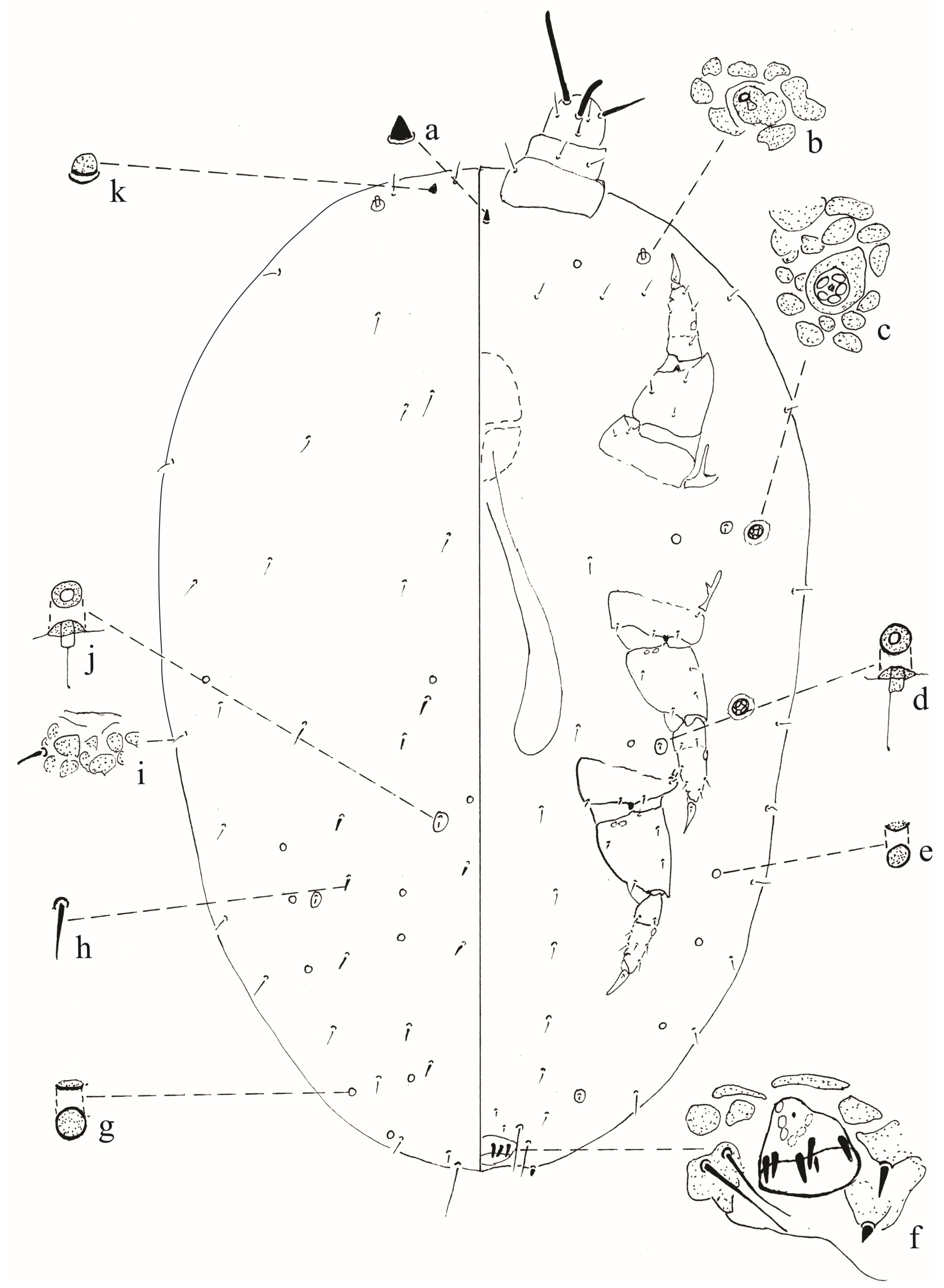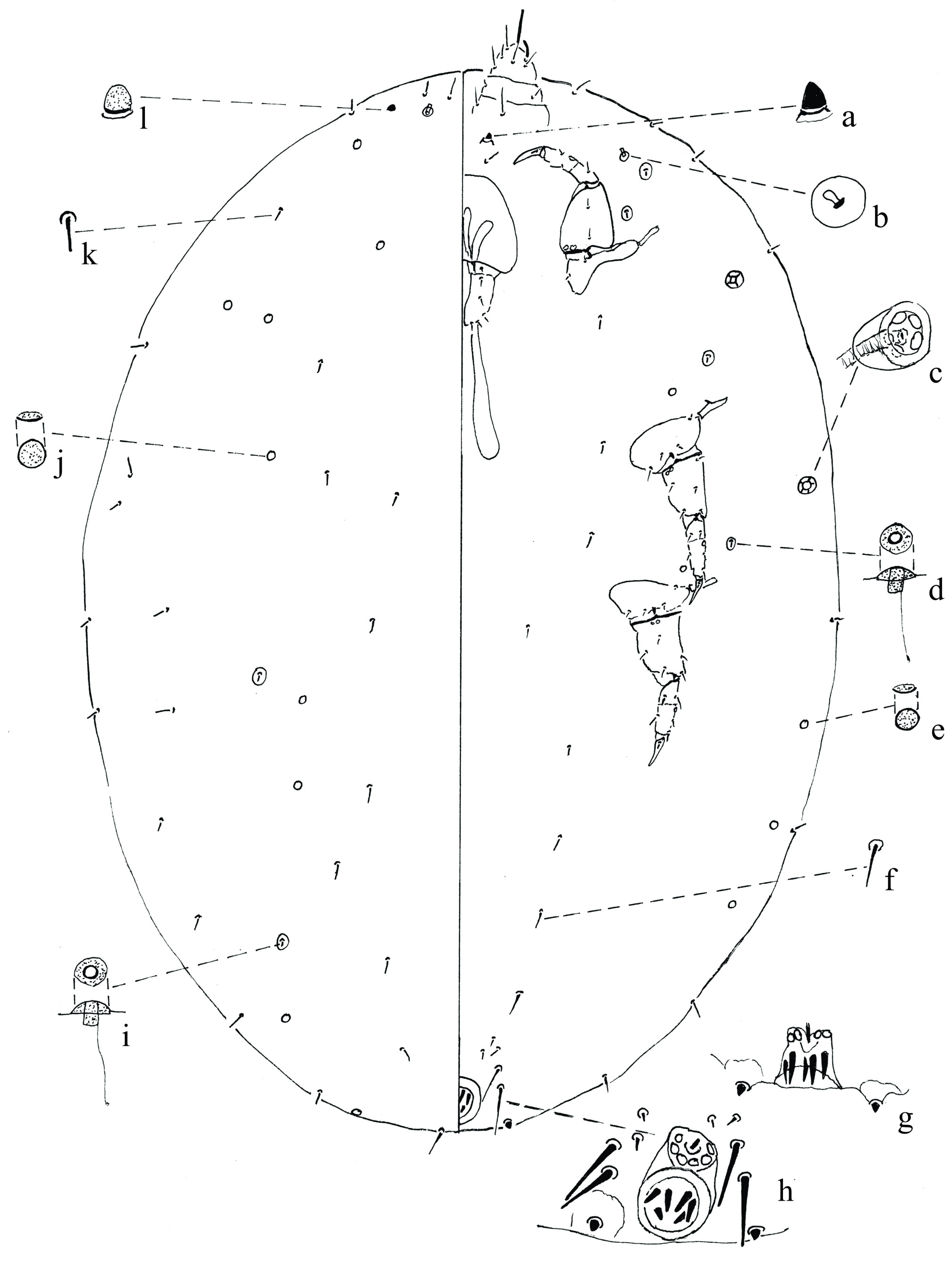Valid Names Results
Barbenigma biza Powell & Miller, 2024 (Ortheziidae: Barbenigma)Nomenclatural History
- Barbenigma biza Powell & Miller 2024: 298. Type data: FLORIDA: Alachua Co., Gainesville, on Rumex hastatulus (Polygonaceae), 03/23/1999, coll. R. Esser; FSCA.. Holotype, female, by original designation Type depository: Gainesville: Florida State Collection of Arthropods, Division of Plant Industry, Florida, USA; Washington: United States National Entomological Collection, U.S. National Museum of Natural History, District of Columbia, USA; accepted valid name Notes: Paratypes: FLORIDA: Brevard, Co., Merritt Island, on Stenotaphrum secundatum (Poaceae), July 4, 1988, coll. S. Walker (5 ad. ♀♀ , 1 second-instar? nymph on 6 slides.); FSCA, USNM. Illustr.
Common Names
Ecological Associates
Hosts:
Families: 3 | Genera: 3
- Arecaceae
- Cocos nucifera | PowellMiKe2024
- Poaceae
- Stenotaphrum secundatum | PowellMiKe2024
- Polygonaceae
- Rumex hastatulus | PowellMiKe2024
Geographic Distribution
Countries: 1
- United States
- Florida | PowellMiKe2024
Keys
- PowellMiKe2024: pp.312 ( Adult (F) ) [Key to species of Carayoneminae (revised from Kozár & Konczné Benedicty 2000)]
Remarks
- Systematics: Barbenigma biza differs from B. boscus in having: more spines on the dorsal abdomen, spines typically occurring in pairs on submargin of each side of each abdominal segment; body setae with blunt, but not capitate, apices; spines on the dorsum short, 14–23 µm long; and dorsal fimbriate setae short, 16–30 µm long (Powell et al. 2024).
- Structure: Slide-mounted holotype 1.25 mm long, 1.1 mm wide; paratypes (n=8) 0.64−1.26 mm long, 0.23−0.95 mm wide. Dorsum with robust fimbriate setae, each with up to five tines, sparse, two present marginally on each side of each abdominal segment, one present submedially on each abdominal segment, roughly in single longitudinal line on thorax and head. Anal ring wrapping around margin, invaginated in pocket, forming setal basket, with ring of conical pores, bearing six robust anal-ring setae with truncate apices. Venter with two pairs of thoracic spiracles, spiracular openings projecting above derm, three pairs of abdominal spiracles, spiracular openings flush with derm. (Powell et al. 2024)
- Biology: The change in body shape between young adult females and older females with eggs is remarkable, with the young adult females thin and elongate, half the length and only a quarter of the width of mature females. We found no morphological differences between either form beyond the difference in body shape. The designation of instars for the immatures is not fully clear (Powell et al. 2024).
- General Remarks: See Powell et al. (2024) for detailed description of adult and nymphs, illustrations, and stacked microscope photography.
Illustrations
Citations
- PowellMiKe2024: description, diagnosis, illustration, key, morphology, nymph, phylogeny, taxonomy, 298
